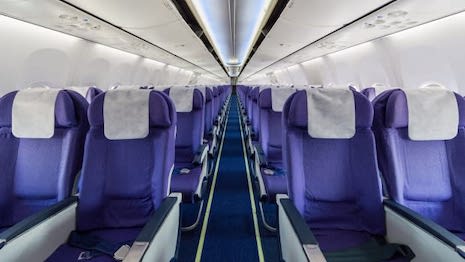 Going the distance matters more now literally and figuratively
Going the distance matters more now literally and figuratively
By Ana Andjelic
New York restaurateur Danny Meyer has no intention to reopen his restaurants.
At least, for the time being. “There is no excitement on my part to having a half-full dining room while everyone is getting their temperature taken and wearing masks, for not much money,” Mr. Meyer shared a couple of weeks ago.
The business model of restaurants, together with retail, fitness, travel, hospitality and beauty salons is going though the Great Inefficiency reckoning. Even when Mr. Meyer’s restaurants open, they will operate at a 50 percent reduction in capacity. This is the likely model for a number of industries.
Ever since Max Weber and Frederick Taylor, efficiency has been the ultimate business goal. Production, distribution, synthesizing workflows, and managing resources and employee output have all been held to the same standard of maximizing labor efficiency and minimizing slack.
The drive for efficiency shaped how we work, live and entertain ourselves. Open-office plans, despite their collaboration mantras and Kombucha taps, have been a prime efficiency tool to pack as many people per square foot as possible.
Restaurants followed the same approach of space utilization and speedy turnarounds. I overheard more strangers’ conversations in New York restaurants than I care for. Put a fork down, and there is a check beelining, for “whenever you are ready.”
Old people found themselves stuffed in the efficiency-driven industrialized care. Production perfected cost-effectiveness at scale. Thanks to it, certain industries such as retail, started over-manufacturing.
Airlines, to make each of their trips as efficient as possible and to squeeze more money from passengers, started offering the growing a la carte menu of auxiliary services, such as checked bags, legroom, meals, and pillows.
Frontier is still charging $39 for a socially distanced seating option, calling it “additional comfort” seat assignment.
In contrast, EasyJet plans to keep middle seats empty for free. Low-budget airlines also ran ridiculously short routes in the name of efficiency, although all the travel time to the airport, going through security, and boarding process made it much less so: one-fifth of the European market last year was made up of flights of less than 300 miles.
Across industries, companies aspired to stay lean to keep profits high. No one wanted cash sitting in their balance sheet, or inventory sitting in their warehouse.
Now they are learning the value of inefficiency in real time. The success of companies embracing the Great Inefficiency in their behaviors and P&Ls ultimately depends on the consumer, and how they find desirable to work, live and entertain themselves.
Here are the five de-efficiency shifts:
De-massification. A century ago, consumers found desirable to own and use machine-made things, enabled by mass production and consumer society.
The machine aesthetic of functionality is visible in modernist furniture and is behind a recent revival of IKEA items as collectibles. Cars, Apple products, kitchens, bathrooms and appliances all present the approachable aesthetic of mass production.
But handmade and locally produced items have never completely disappeared.
Luxury, which operates on the value versus volume principle, is not efficient – it strongly revolves around putting in time needed for production of excellence and time needed to create desire. We deem things we have to wait for more desirable than those that we can have immediately.
In 2019, Rolls-Royce Motor Cars delivered an historic annual sales record with the total of 5,152 cars. Instead of increasing the volume of production, it enhances the value of each car it produces.
Ferrari purposefully limits its sales to around 10,000 cars a year, but is judged more valuable by investors than General Motors, with more than 7.7 million vehicles.
Hermès creates a deliberate production bottleneck. It takes a craftsperson 20 hours to make one bag. It also takes months to train craftspeople by experts, and Hermès invests in schools for the next generation of makers, as existing experts are dying out and their descendants are opting for a different line of work. This approach pays off.
In first-quarter 2020, Hermès revenue was down only 6.5 percent, compared to Kering’s 14 percent.
Longchamp, Breitling and hand-made Japanese denim brand Momotaro also invest in vertically integrated, local and self-sufficient production and make it the core pillar of their branding.
In air travel, the de-massification approach means traveling less and more expensively. It also means exploring other ways to travel other than air, like taking road trips or train rides, which create new forms of social, cultural and economic capital.
De-specialization. For efficiency purposes, mass production divides tasks into simple, routine categories based on functional specialization.
All employees are responsible for what they are hired to do and what is expected of them. This model still largely applies, even in creative industries such as advertising or fashion.
But specialization is ill positioned to solve fuzzy problems, such as redefining the role of physical retail or modernizing merchandising. Answering how to use physical stores to drive revenue across channels or how to change the cost model to support the new role of stores requires a holistic perspective and a versatile skillset.
Best talent does not define itself through roles or specializations such as the social media manager or copywriter or a PR person. They bring value to the organization through their ability to grow its business, move the wider culture, and help others do their job better.
Decentralization. “I spent around £35 million on property in a year. I would much rather invest that in people than expensive offices,” noted adman Sir Martin Sorrell. He is not alone: a number of executives profiled in a recent Financial Times piece on the end of the office note that “the notion of putting 7,000 people in a building may be a thing of the past.”
This moment is a great A/B test on the way of working, and the idea of a more decentralized and less dense work structure is gaining steam.
In my conversations with company founders and corporate workers alike, I have repeatedly heard a somewhat befuddled admission that the current way of working – in a more decentralized manner – made teams be more aligned and collaborative, and made their decisions faster, in a lateral, grassroots manner.
In retail, smaller, more decentralized stores are more viable than the massive ones. They can more easily stock and sell merchandise based on the local demand, offer personalized service, and more focused assortments.
Improvisation. One of Weber’s six pillars of bureaucracy are formal rules and requirements. Strict rules and “ways of doing things” are required to ensure operational and organizational uniformity and predictability.
At the time of the BANI world – Brittle, Anxious, Nonlinear and Incomprehensible – strict rules are a liability. The BANI framework was coined by futurist Jamais Cascio to replace the world of VUCA – Volatile, Uncertain, Complex and Ambiguous.
Mr. Cascio’s argument is that, in these times of chaos, VUCA is the norm and we need new forms of “adaptive strategies.”
Companies in industries from fine food wholesale and restaurants to fashion retailers and bodegas are forced to improvise to keep their business going.
Restrictions create new outputs, forms of working and business models.
While Danny Meyer may not reopen his restaurants, he has accelerated their delivery capabilities and, in case of Shake Shack, make-at-home meal kits.
Having a strong and centralized customer data bank also helped, especially in retail, where resources and initiatives had to be quickly switched from physical retail to ecommerce. Retailers with substantial omnichannel capabilities fare better than those without them.
Community-fication. In mass production, efficiency requires short-term, impersonal interactions.
I recently heard that many independent dentists are going out of business because of dental networks.
Dental networks lower the cost of service by giving their customers one-stop-shop and convenience of access. Mass retailers inched independent retailers out based on the same principle.
In craft production, the act of making involves an entire community of tradesmen, artisans, farmers and workers.
A handcrafted object is usually the beginning of a long-term connection between people who source materials, work on objects, and sell them. Some of the Hermès artisans and even corporate employees have spent their entire work life with the company.
Consumers are also more willing to spend a premium on handcrafted items. This is due both to the items’ quality and to items being enriched by everyone who touched them: the community that surrounds each handcrafted item.
 Ana Andjelic
Ana Andjelic
Named to Forbes CMO Next, Ana Andjelic is a strategy executive and doctor of sociology. She runs a weekly newsletter, The Sociology of Business, and is author of The Business of Aspiration, out from Taylor & Francis in the fall, available for pre-order here. Reach her at andjelicaaa@gmail.com.
